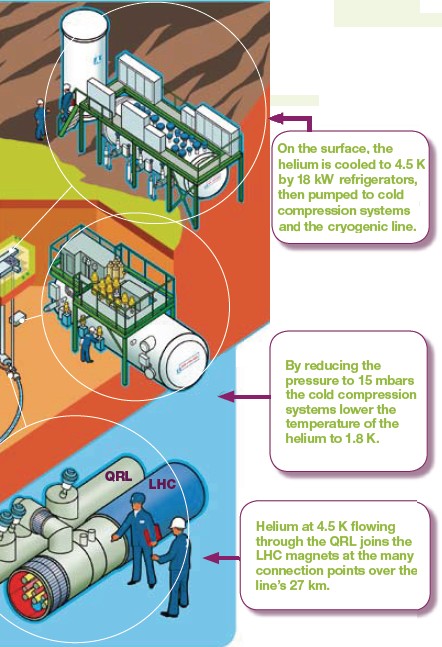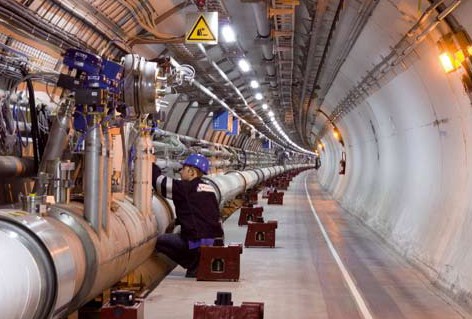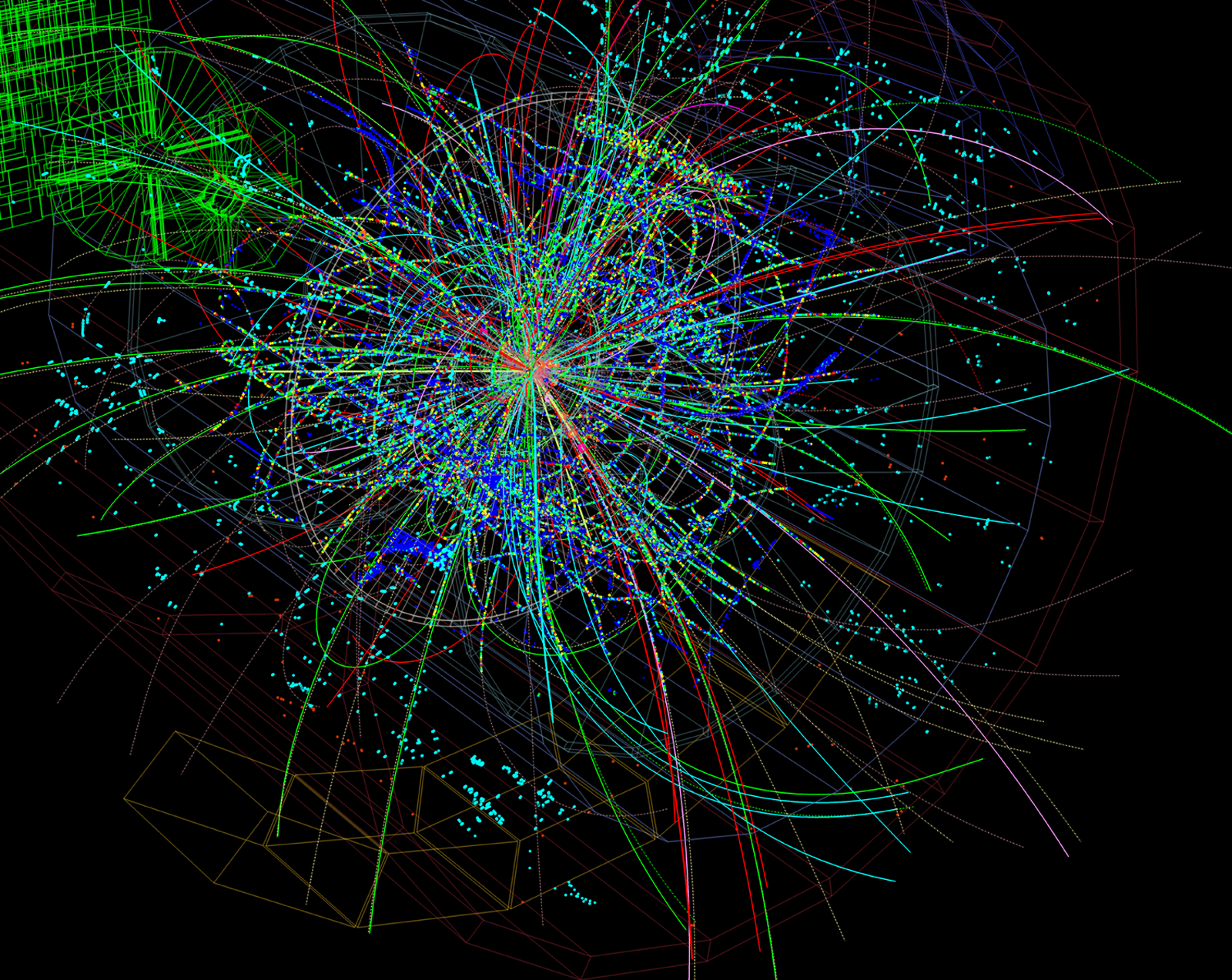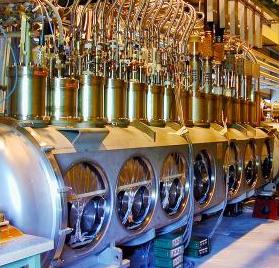Taking a closer look at LHC
|
Protons are guided around the accelerator ring by a strong magnetic field, achieved using superconducting electromagnets. These are built from coils of special electric superconducting cable that operates under very low temperature, about 2 K (-271°C), a temperature colder than outer space. For this reason, much of the accelerator is connected to a distribution system of liquid helium, which cools the magnets, as well as to other supply services.
These superconducting wires are made of niobium-titanium. The helium must flow constantly and be cooled permanently, taking all the heat away. The circuit should continuously be able to cool all helium down to this low temperature. They will need 5000 tons of helium in this giant magnet, which is the amount produced annually worldwide.
|
LHC_Cryogenics |
ith the collider being divided into 8 underground sectors delimited by the access shafts, the same number of refrigerators is required to keep the LHC at its operating temperature.
For the LHC, two 12 kW capacity refrigerators at 4.5 K, formerly used for the LEP, have been upgraded in order to increase their capacity to 18 kW, and two non standard equipment for the largest new 18 kW machines have been designed and installed on the site. One of the refrigerators was used initially to test all the magnets to be installed at the LHC. Helium is cooled in the refrigerators’ heat exchangers to 80 K by using about 10 000 t of liquid nitrogen (Liquid nitrogen is never directly injected into the LHC to avoid any possible source of asphyxiation in the underground tunnel). But this represents only a first stage.
To guarantee the performance of the accelerator components, helium at 4,5 K must be further cooled to 1.8 K (-271,4°C). Helium at 4,5 K is injected into the magnets’ cold masses. Once the magnets are filled, the refrigeration units bring the temperature down to 1,9 K (-271.3ºC).To achieve this, the vapour pressure over the helium bath which has a boiling point of 4,5 K at atmospheric pressure has to be reduced.
If 15 mbars is to be attained volumetric compressors at ambient temperature need to be combined with hydrodynamic centrifugal compressors operating at low temperatures (Cold Compression System - CSS).
|
When helium is cooled further it undergoes a second phase change at about 2.17 K (–271.0 °C) to its "superfluid" state. Among many remarkable properties, superfluid helium has a very high thermal Routing the cold |
 |
The LHC tunnel therefore contains two rings, the first consisting of the magnets and proton accelerating cavities, i.e. the LHC, and the second so-called “cryogenic ring” or QRL, which transmits the cold power needed to keep the magnets at 1.8 K. As with the LHC, the cryogenic line is divided into eight sectors, each of them connected to an 18 kW refrigerator and a cold compression system (CCS) via the distribution boxes (QUI ). To achieve what is in fact a first in the world, i.e. the QRL, which allows 100 tons of liquid helium to be run over a distance of 27 km.

The 27 km long cryogenic ring.
ΔL=L0·α·ΔT ⇒ ΔL=14,343·10-5·(1,9 – 300) ⇒ ΔL ≈ -0,043 m
So, the contraction is more than 4 cm, and taking into account that there are 1232 dipoles,
But taking into account all the magnetic multipoles, the total contraction over the ring as a whole is close to 80 m, and special devices (bellows and expansion loops) in the interconnections between the magnets compensate for this.
Obviously, the materials used in LHC must have a very controlled behaviour at low temperatures in order to avoid misfunctions and errors. However, it's imposible to avoid thermal contractions completely, so engineers have to take it into account during the assembly of the different pieces which form the structure of the machines.
|
AUTHORS Xabier Cid Vidal, PhD in experimental Particle Physics for Santiago University (USC). Research Fellow in experimental Particle Physics at CERN from January 2013 to Decembre 2015. He was until 2022 linked to the Department of Particle Physics of the USC as a "Juan de La Cierva", "Ramon y Cajal" fellow (Spanish Postdoctoral Senior Grants), and Associate Professor. Since 2023 is Senior Lecturer in that Department.(ORCID). Ramon Cid Manzano, until his retirement in 2020 was secondary school Physics Teacher at IES de SAR (Santiago - Spain), and part-time Lecturer (Profesor Asociado) in Faculty of Education at the University of Santiago (Spain). He has a Degree in Physics and a Degree in Chemistry, and he is PhD for Santiago University (USC) (ORCID). |
CERN CERN Experimental Physics Department CERN and the Environment |
LHC |
IMPORTANT NOTICE
For the bibliography used when writing this Section please go to the References Section
© Xabier Cid Vidal & Ramon Cid - rcid@lhc-closer.es | SANTIAGO (SPAIN) |




